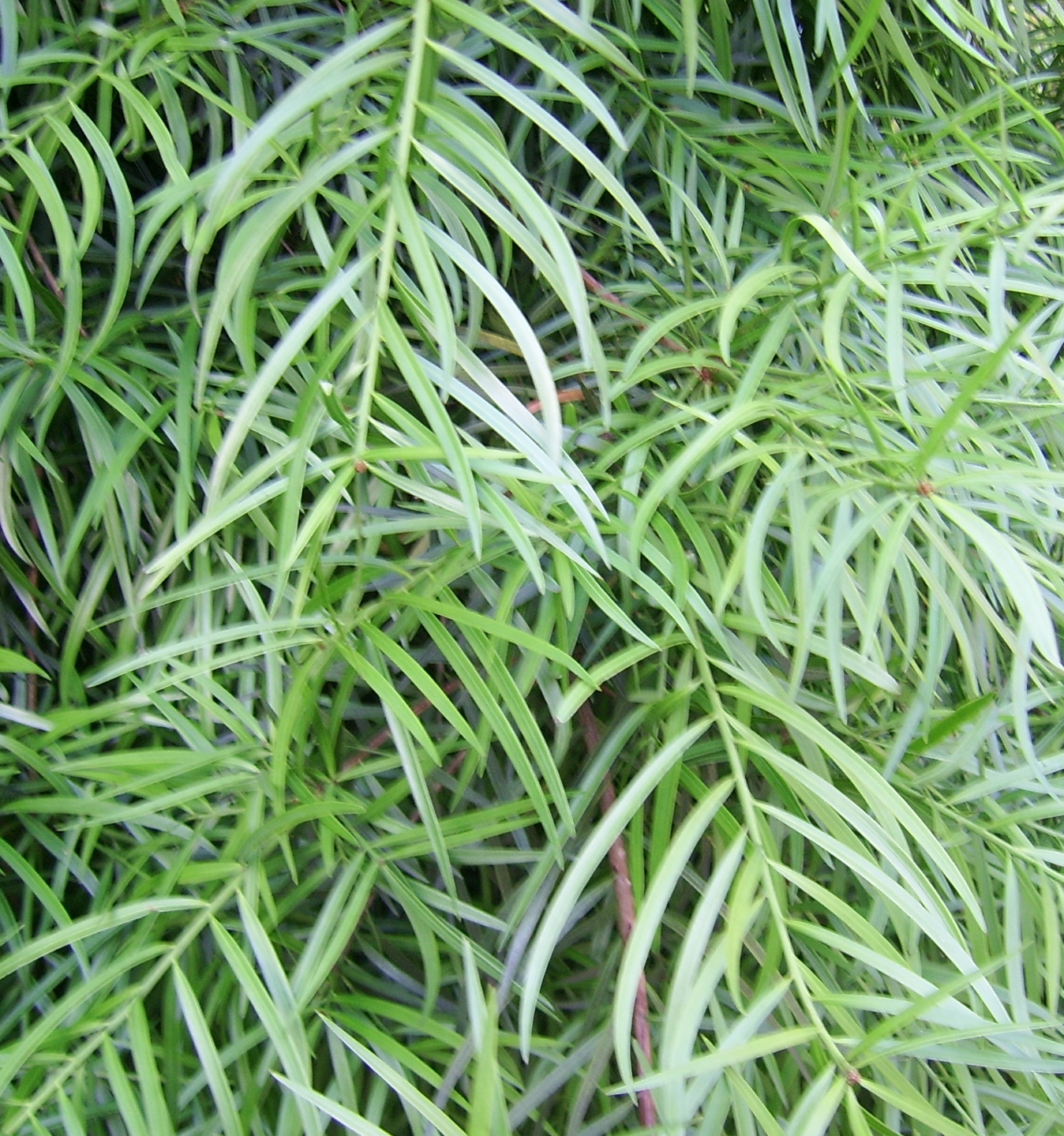Podocarpus salignus on:
[Wikipedia]
[Google]
[Amazon]
 ''Podocarpus salignus'', the willow-leaf podocarp, is a
''Podocarpus salignus'', the willow-leaf podocarp, is a
Conifers Around the World: Podocarpus salignus - Willow-Leaf Podocarp
salignus Trees of Chile Trees of mild maritime climate Ornamental trees Vulnerable plants Taxonomy articles created by Polbot Flora of the Valdivian temperate forests {{conifer-stub
species
In biology, a species is the basic unit of classification and a taxonomic rank of an organism, as well as a unit of biodiversity. A species is often defined as the largest group of organisms in which any two individuals of the appropriate s ...
of coniferous evergreen
In botany, an evergreen is a plant which has foliage that remains green and functional through more than one growing season. This also pertains to plants that retain their foliage only in warm climates, and contrasts with deciduous plants, whic ...
tree in the family
Family (from la, familia) is a group of people related either by consanguinity (by recognized birth) or affinity (by marriage or other relationship). The purpose of the family is to maintain the well-being of its members and of society. Idea ...
Podocarpaceae. It is found only in Chile, from 35 to 42° south latitude, where it is threatened by habitat loss
Habitat destruction (also termed habitat loss and habitat reduction) is the process by which a natural habitat becomes incapable of supporting its native species. The organisms that previously inhabited the site are displaced or dead, thereby ...
. Growing up to in height and in diameter, the trunk is straight and cylindrical, with reddish-gray bark. The arching branches bear long, narrow, willow-like leaves, and red fleshy oval fruits where male and female plants are grown together. In Chile it is known as ''Mañío de hojas largas'' (long-leaved).
Cultivation and uses
This tree is grown in gardens and parks of Chile, and has been introduced to the British Isles. It requires heavy rainfalls or high humidity, but withstands temperatures down to . It has gained theRoyal Horticultural Society
The Royal Horticultural Society (RHS), founded in 1804 as the Horticultural Society of London, is the UK's leading gardening charity.
The RHS promotes horticulture through its five gardens at Wisley (Surrey), Hyde Hall (Essex), Harlow Carr (Nor ...
's Award of Garden Merit.
The wood is of good quality, yellowish colored, straight grained, and highly moisture resistant. It is used in furniture and construction.
References and external links
*Donoso, C. 2005. Árboles nativos de Chile. Guía de reconocimiento. Edición 4. Marisa Cuneo Ediciones, Valdivia, Chile. 136p. *Hechenleitner, P., M. Gardner, P. Thomas, C. Echeverría, B. Escobar, P. Brownless y C. Martínez. 2005. Plantas Amenazadas del Centro-Sur de Chile. Distribución, Conservación y Propagación. Universidad Austral de Chile y Real Jardín Botánico de Edimburgo, Valdivia. 188p. *Hoffman, Adriana 1982. Flora silvestre de Chile, Zona Araucana. Edición 4. Fundación Claudio Gay, Santiago. 258p. *Rodríguez, R. y M. Quezada. 1995. Gymnospermae. En C. Marticorena y R. Rodríguez ds. Flora de Chile Vol. 1, p 310–337. Universidad de Concepción, Concepción. *Bean. W. Trees and Shrubs Hardy in Great Britain. Vol 1 - 4 and Supplement. Murray 1981. *Usher. G. A Dictionary of Plants Used by Man. Constable 1974 . *F. Chittendon. RHS Dictionary of Plants plus Supplement. 1956 Oxford University Press 1951. *Huxley. A. The New RHS Dictionary of Gardening. 1992. MacMillan Press 1992 * *Conifers Around the World: Podocarpus salignus - Willow-Leaf Podocarp
salignus Trees of Chile Trees of mild maritime climate Ornamental trees Vulnerable plants Taxonomy articles created by Polbot Flora of the Valdivian temperate forests {{conifer-stub